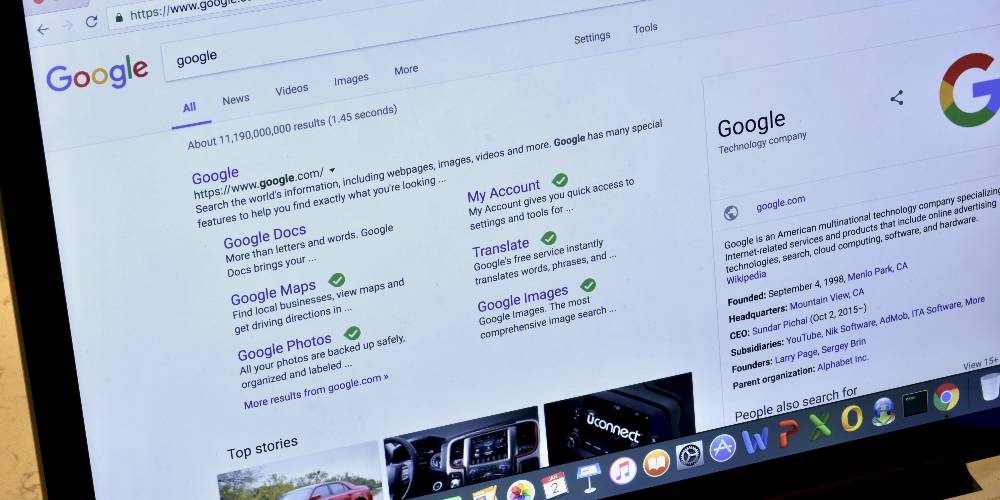SEO For Ecommerce Product Pages: 20 Do’s & Don’ts
 The retail pie is expected to grow by more than $11 trillion over the next ten years.
The retail pie is expected to grow by more than $11 trillion over the next ten years.It’s critical that your search strategy delivers because more and more websites want a piece of the pie.
Adding to this the fact that advertising costs are reaching the realm of prohibitive, only to see sinking results, and smartseo practices become more urgent than ever, makes this all the more relevant.
There are 10 do’s and don’ts of a product page.
10 steps to avoid and 10 steps to take are included in the list.
1 You need to fine- tune your strategy.
A product page can be improved with the help of research.
Product-focused topics are always used in research. Fixating on volume is not a good idea. Think about what will convert and what will be irrelevant.
If you have data from paid search, you can use it in your research to include ad copy with high click-through rates.
Product pages have transactional intent, so make sure your landing pages are designed to fit that.
A person looking for a specific product like Series S60l & Expression E52 paintbrush strongly indicates they are ready to buy it.
It’s easy for them to take that important step.
2 Title and Meta Descriptions should be improved.
The title tags and meta descriptions are very important.
You need to include details.
Your proprietary brand is included in the brand of the product.
The product’s name
There is a model number.
There are other important information.
3 Product pages with structured data should be marked up.
Rich snippets can be seen with the correct structured data type.
All product pages should have the same information.
Drive more traffic.
You can improve your sales by driving more sales.
4 There are helpful FAQ.
It is important to have high-quality content that is user-friendly.
Customers may not buy from you if users don’t find your content useful.
FAQ structured data is not marked up on most category and product pages.
User-generated content is a mistake.
If I have a question about a product, I don’t want to talk to a customer service person.
If the brand in question has built an FAQ section with answers to questions that users commonly ask, I can easily find the information I need, and so can other customers.
The brand sells more products.
5 Always write a unique product description.
I don’t know how many times I’ve seen an online store use the same description for all products. This is a big loss.
Each item has the ability to rank for branded and non- branded keywords and should include a unique description to take full advantage of the internet’s search engines.
Consumers will click on your listing if you give them useful information.
There is a picture from a search on the internet.
6 Customer reviews and real testimonials can be shared.
Product pages with customer reviews have a higher conversion lift than their review-free counterparts.
Genuine testimonials from customers, who have tried your product, speak volumes to in- market consumers trying to figure out whether or not to buy from you.
It is important for customers to be able to share their experiences with your products.
There are other benefits.
If you have an endorsement from a celebrity or famous person, you should read reviews.
They give fresh, unique content that is sought after by the search engine. To mark them up, be sure to use the reviewschema.
There is a picture from Zoya.com.
7 There are test landing pages to find the best.
If you want to find out the ideal configuration for a product page, you should use tools like Optimizely and the others.
Changing the location of your call to action can lead to more conversions.
Test your page layout options to see if they work for you.
8 High-quality video and imagery can be used.
You can’t touch or test the product you’re shopping for online.
End users need to feel confident in their purchases, and high-quality images and videos can help.
I went to the Home Depot site after searching for a drill. The landing page of the company’s website is filled with powerful content and it ranks very high for this term.
Common questions are answered in videos.
Q&A with other people
There is imagery of what a kit contains.
I wanted to know how many batteries came with the drill and if it came with a bag.
There is a picture from homedepot.com.
9 Page load times need to be minimized.
It’s important that your product pages are mobile-friendly. Consumers are using online searches this way.
If you want your content to be seen by your target audience more quickly, you need fast-loading websites.
That helps increase sales and revenue. It gives you an advantage over your competitors.
Your bounce rates are decreased by it.
Three seconds or less is what you should aim for.
10 Product pages should be audited for technical issues.
Product pages can be duplicated, which can cause a lot of headaches for search engines.
There are duplicate items.
The budget was wasted.
Link equity is split.
Audit your pages to see which technical and content elements need to be changed.
There are problems to watch for.
There are 10 don’ts of an online product page.
1 Product descriptions from the manufacturer’s website should not be used.
The most common mistake I see in product pages is this.
A lot of manufacturer descriptions are not good for search.
It is worthwhile to write more engaging descriptions. The more detail the better. Being found and being invisible may be different things.
It is important that you do not want duplicate content.
2 Don’t kill your seasonal pages after the peak.
It’s a common mistake brands make.
While removing seasonal pages after the peak period may seem sensible, it will leave you with the same uphill battle every year, as you try to regain authority for seasonal terms.
It will probably be too late by the time you do this each year.
Do not eliminate a seasonal product page that has built up rankings, traffic, and sales over time.
Amazon is a good example of how to do this. Over time, the dedicated Black Friday URL will gain authority.
The page can be updated as Black Friday approaches.
3 Don’t use automation.
It is not a best practice to have product pages with the title tag followed by brand and nothing else.
Changing just a few variables could have a negative impact on your CTR.
Important information in the titles can’t be automated. This can increase your site’s ranking.
The title and meta description should be unique.
4 Don’t pull out stock pages.
Products go out of stock when supply chains are stressed.
You should keep the URL live if the product is unavailable.
It can seem counterintuitive.
Keeping these pages live and providing links to other products until the item is back in stock is a more profitable strategy.
There is a picture from karmaloop.com.
5 Don’t use the wrong type of data.
Structured data can help you rank in the rich results and drive more traffic and sales. Product data can help you rank better.
The wrong type of structured data is used by many brands. Both hurt your ranking.
There is a picture from the search console.
6 Don’t use weak calls to action.
Many brands don’t have strong calls to action, but clean and easy CTAs are a must for any site.
The main job of your product page is to make money.
Users will visit your competitors site if you take too long to find how to purchase your products. You should make it easy for them to purchase from you.
7 Don’t use a lot of CEOKeywords andKeywords with no volume.
When a CEO inquires about why they aren’t ranking for a specific phrase, anseo specialists often reply. The answer is that there isn’t a lot of searches.
Think of yourself as a customer, do your research, and use data to inform your decisions about which words to use.
Users aren’t really searching for “lego spice girls back in stock”
I won’t get many sales if I rank for it.
8 There are opportunities for internal linking and backlinks.
Links are still important for online shopping.
Sometimes brands forget about product pages when they build links to their homepage and category pages.
These pages can rank for long-tailKeywords that have high purchase intent and can increase revenue and sales.
Product pages with internal links and paid social should always be supported.
9 Don’t charge the wrong price.
Consumers are less likely to buy your products if you don’t have a pricing strategy.
We experienced a baby food shortage when the prices of products went up.
Paying 20% more for baby formula is crazy. It’s good that states are cracking down on price hikes.
10 Don’t forget about mobile.
More than half of online shoppers in the U.S. use mobile devices to shop. More than one third of them are mobile-only shoppers.
Users won’t consider buying products from your site if you don’t have a mobile friendly product page.
They are wrapping up.
You are also burningishing your brand by sharpening your strategy.
Giving consumers the best information there is on a product, a compelling reason to buy, answers to their anticipated FAQ, and genuine third-party thumbs-up, you’re giving them reasons to return to your site
Brand building can take a long time. It is an assurance to customers that they can trust you.
It’s important to be vigilant about your search engine ranking.
There are more resources.
ImYanis is the featured image.


![UX & SEO: Strike Balance. Achieve Maximum Results [Ebook]](https://cdn.searchenginejournal.com/wp-content/uploads/2022/09/uxseo-featured-slider-6319ea888d29b-sej.jpg)




